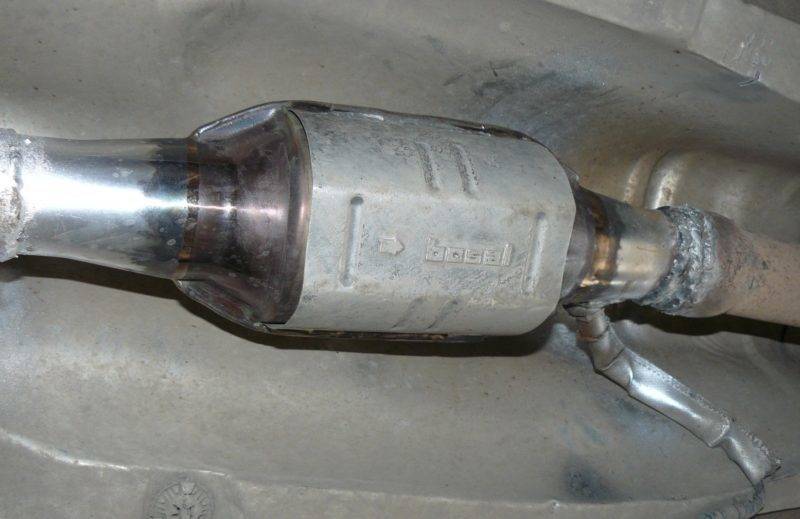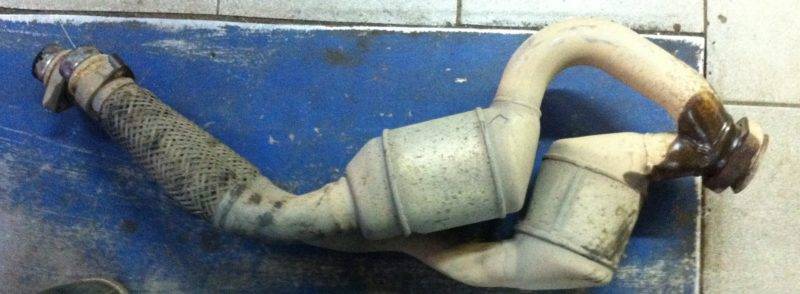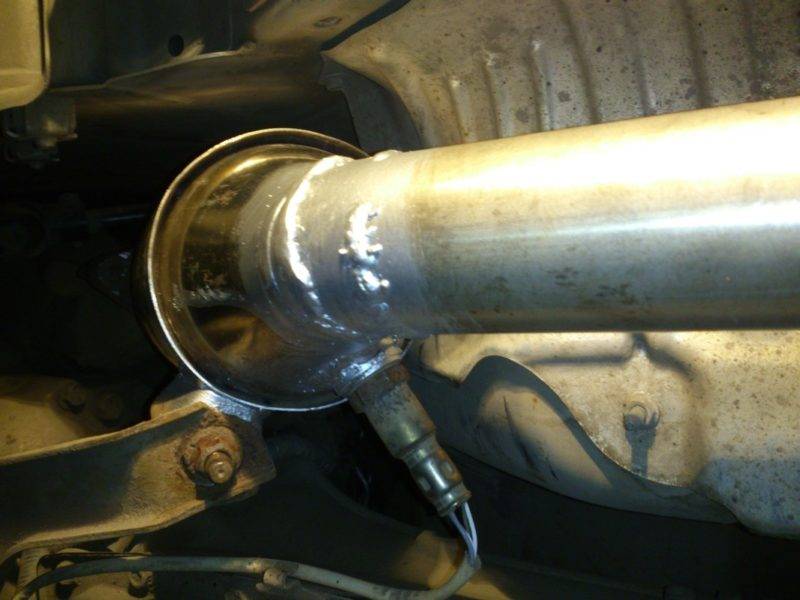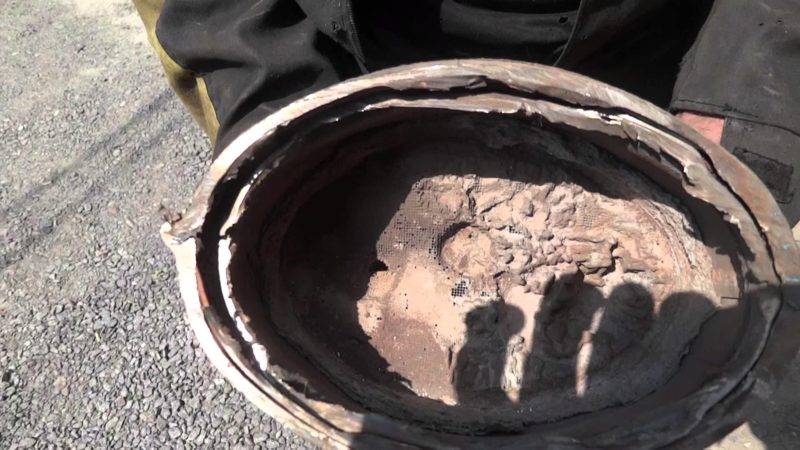Why do you need a catalytic converter in a car? This question worries many car owners, because for some models the cost of this part reaches 13% of the total cost, and without it the car will not stop driving. Let's figure out if this component is really necessary and what is the use of it for a simple driver.
Purpose and device of the catalyst
It is possible, without delving into the theory of automotive technology, to say with confidence that a car engine emits substances harmful to human health during operation. To minimize harm to the environment, almost all, even the cheapest cars, are equipped with a catalyst or catalytic converter, which is located in the muffler, in the path of the exhaust gases. The catalyst almost completely eliminates exhaust gases from:
- Carbon monoxide CO, which in high concentrations causes oxygen starvation of the body.
- Hydrocarbons, unburned fuel particles, are carcinogenic when inhaled.
- Nitrogen oxides, high concentrations of this harmful substance in the inhaled air cause suffocation.
Want to know which is better: You will find the answer to this question in our material.
Details about chip tuning Niva Chevrolet can be found
What is a catalyst on a car and what is it made of
Structurally, the catalytic converter is a ceramic substrate in the form of honeycombs, on which precious metals are deposited. They are the catalysts for a chemical reaction. Flowing around the cells with a catalyst, the exhaust gases after the engine get rid of harmful substances and are sent through the muffler to the atmosphere. All this device is located vertically, immediately after the engine, or horizontally in front of the muffler.
For the greatest efficiency and the lowest cost, the designer tries to install the converter as close as possible to the engine, where the temperature of the exhaust gases is higher. This allows you to slightly reduce the area of the cells, which reduces the cost of the part.
The downside is reduced lifetime due to the increased temperature of the ceramic substrate.
You will learn more about the device of a car catalyst from this video:
Symptoms
The estimated service life of the catalyst in the best case is no more than 120 thousand km. But it can be greatly reduced by low-quality gasoline and oil, engine malfunctions associated with fuel injection, air supply, or other, sometimes even mechanical, damage. A failed part not only ceases to perform its function, but also makes noise, rattles and vibrates. In the case of a vertical arrangement of the converter, it is possible for the destroyed elements to fall directly into the engine.
Signs of a failed catalytic converter in a car are easy to spot. The yellow "check engine" icon lights up. This means that the oxygen content sensor, installed immediately after the converter, fixes the output of this value from normal values. After some time, extraneous noises appear in the area of \u200b\u200bthis part, a metallic clang, a rumble caused by the remnants of the ceramic substrate, which is gradually destroyed. An increased content of harmful substances in the exhaust of a car will definitely indicate the destruction of the catalyst.
If heavy deposits appear on the catalyst, due to mechanical damage to the engine, failed spark plugs, burnt oil rings, the ceramic substrate may melt due to elevated temperature. After that, the resistance of this part increases many times, which prevents the engine from working normally. In fact, the car stops driving or even starts.
A good engine diagnosis before installing a new catalytic converter will help identify the problem and correct it to prevent a costly part from failing again.
Converter repair
With the complete or partial destruction of an expensive catalytic converter, there are several ways to solve this problem:
Sometimes it happens that the use of not quite high-quality fuel or oil caused contamination of the surface of ceramic honeycombs, or engine damage caused soot or deposits to appear on them. If at the same time the catalyst is overheated, then the ceramic substrate melts and the part fails. In this case, no flushing of the car's catalyst will help. While maintaining the integrity of the structure, it is necessary to eliminate the causes of pollution. After the engine has been repaired, the catalytic converter will clean itself due to the flow of flue gases and temperature, so there will be no need for flushing either.
The specifics of the operation of cars in Russia with low fuel quality and a long period of use leads to a massive transition to flame arresters or the use of scrap to remove the insides of the converter. This is bad for the environment and simply harms people in closed underground parking lots. Before the widespread transition to quality gasoline, this practice will be common, because many motorists cannot buy an original or even a generic catalyst several times a year.
Learn about what else can lead to rapid wear of catalysts from this video:
Outcome
Replacing the converter with the original one is justified only on a new car, if the owner is confident that the engine is working properly. After several years of active operation or on supported vehicles, it is better to replace the catalyst with a universal one. In a few more years, only the installation of a flame arrester or the removal of the insides of the neutralizer will help, because. cells will constantly clog.











